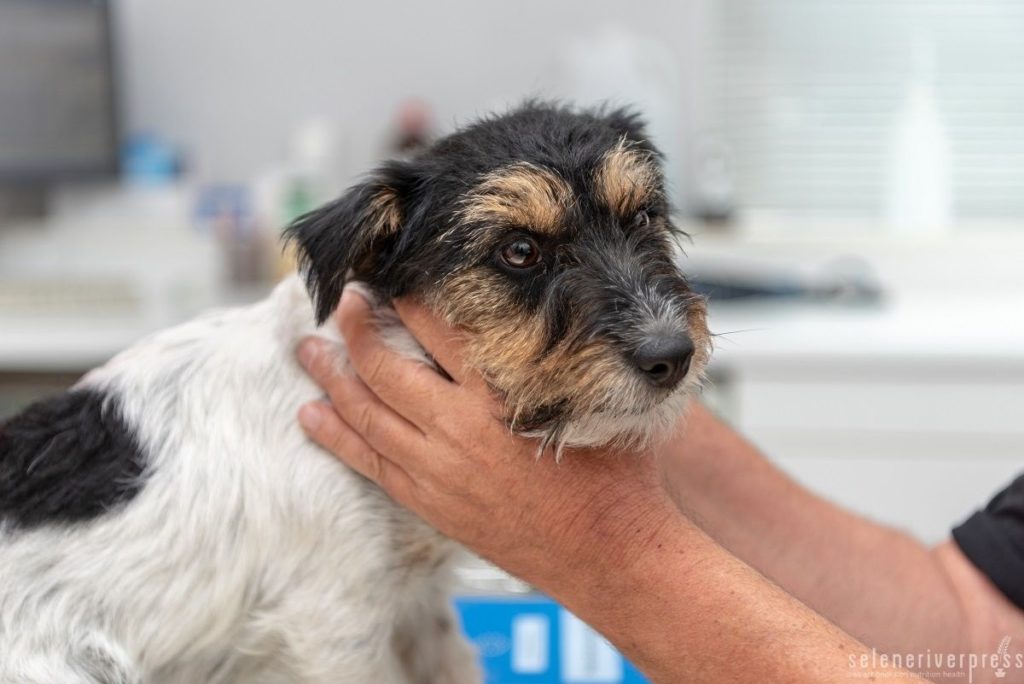As our pets age, it’s common to start finding some lumps and bumps. Although they can be genuinely concerning, most lumps and bumps are often benign. But how can you tell if you should be concerned or not? The first thing I’d recommend is setting up an appointment with your veterinarian. Never try to identify the growth yourself because looks can be deceiving. However, educating yourself on the various types of lumps and bumps you might find can be beneficial for all pet owners.
Let’s start with the most common benign lump in dogs and cats—the lipoma. These are usually found under the skin of middle-aged to older pets and are more common in overweight pets. Lipomas are relatively soft, somewhat mobile tumors of fat cells that grow very slowly and rarely spread. These tumors can be a cosmetic concern, but they don’t to be removed unless they become excessively big and/or hinder movement. Lipomas don’t normally go away on their own.
If you suspect your pet has a lipoma, your veterinarian can diagnosis it with the use of a fine needle aspiration. Although lipomas can develop in any dog or cat, certain breeds are predisposed to them, including Labrador retrievers, Weimaraners, Doberman pinschers, and Siamese cats.
What might cause lipomas? Refined carbohydrates such as white rice, white sugar, white flour, chemical additives and preservatives, and other unhealthy pet food ingredients can all contribute to fatty tumor growth.
The second most common tumor is called a sebaceous adenoma. This is a nonviral type of cutaneous wart that arises from the sebaceous glands (responsible for producing the oils of the skin). These generally hairless protrusions are firmly attached to the skin and can have the appearance of cauliflower.
These tumors develop from the disordered growth of cells related to hair follicles, sebaceous glands, or sweat glands (which dogs and cats still have, even though they don’t sweat the same way we do). In dogs, they are commonly found on the head, neck, back, eyelids, and limbs.
No treatment is required for sebaceous adenomas, unless the area breaks open and bleeds, or if it becomes infected, which can happen from a collar or leash rubbing against it, or from your dog chewing and/or licking at it. Grooming procedures such as brushing can also cause pain. For these reasons, you should consider surgical removal. These tumors can occur in any breed but tend to be more common in cocker spaniels, beagles, miniature schnauzers, poodles, and dachshunds.
What might cause sebaceous adenomas? When the gland involved begins to overproduce oil, it swells in size. Nutritionally, rancid and refined fats, including all refined oils, can play a part in the disruption of gland health. Feed wholesome fats like butter, unrefined oils, fresh animal fats, raw milk, and cultured milk products like plain yogurt, kefir, and raw milk cheese instead. (In humans, zinc is needed for proper gland function along with healthy gonadal hormone function.)
Hives, or urticaria, are the result of localized histamine release in the skin that cause blood vessels to dilate. Locally, the inflammation causes red, raised welts and bumps that we call hives. Small bumps can blend together and form large swollen spots. These welts can appear anywhere on the body, including the tongue, face, belly, throat, and ears. These welts tend to be very itchy. Hives are often caused by an allergic reaction to a substance that the animal has come in contact with, either topically or by ingesting it.
Allergic reactions should not be ignored, especially if the hives are located in the mouth or throat. This requires a call to your vet. If you are familiar with Standard Process, I recommend keeping a bottle VF Antronex on hand. Antronex supports liver detoxification, particularly the removal of histamine from the system. As histamine is removed, itch improves or resolves. This can happen quite quickly. Unfortunately, hives can last anywhere from a few minutes to a few days—or even months—if left untreated.
If you own multiple cats or allow your cat to go outside, you’re probably familiar with a cat bite abscess. This is a painful, warm swelling that can be either firm or soft. In many cases you will find a puncture wound or a small laceration with pus draining on the swollen area. Some small abscesses can resolve on their own, but most cases need medical attention. Your dog or cat will have to be sedated while the veterinarian lances and cleans out the abscess. A drain will be put into the wound to prevent the abscess from closing back up and sealing in the infection. Antibiotics are usually prescribed to treat the underlining bacterial infection.
Abscesses in dogs are usually the result of a wound or puncture, a bad tooth, or impacted anal glands. Giving Canine Immune System Support or Feline Immune System Support from Standard Process during an abscess infection will provide nutritional and biochemical support for healthy immune cells and tissues.
Papillomas are common in dogs but less so in cats. These tumors are caused by viruses (commonly known as warts) and are contagious between dogs. Classically round but with a rough, almost jagged surface similar to a sea anemone or a cauliflower, they are often found on the lips and muzzles of young dogs (under two years). The tumors often disappear on their own over one to five months as the animal slowly develops an immunity to them. However, if a papilloma becomes inflamed or infected over time, it may need to be surgically removed, which can be done along with a dental if indicated.
Looks like another case to support the immune cells and tissues. A weakening of the immune alliance—for various reasons, age being only one factor—can play a role in your dog’s susceptibility to warts. Hint, hint: try Canine Immune System Support or Feline Immune System Support.
Many benign and malignant tumors look very similar. For this reason, I stress having your pet examined by your veterinarian when you find a lump. For example, a mast cell tumor of the skin can occur anywhere on the body and vary in appearance. It can be a raised lump. It can be a bump on or just under the skin. It can be red, ulcerated, or swollen. While some may be present for many months without growing much, others can appear suddenly and grow very quickly. You can see how easy it is to confuse them.
Mast cell tumors (MCT) are one of the most common cancers in dogs, accounting for approximately 20 percent of all skin tumors in canines. As Washington State University Oncology Service explains:
“MCT most commonly are seen as solitary lumps or masses in or underneath the skin; occasional dogs can have multiple masses from MCT. MCT can look like just about anything, ranging from benign-appearing lumps (such as a lipoma), to more angry or ulcerated lumps, masses with a stalk or focal thickenings in the skin. MCT may change quickly in size (become larger then smaller) because of reactions around the mass. Some dogs may have signs of systemic disease, which can be caused by some of the biologically active compounds found within mast cells. In most cases, evidence of a MCT is easily generated by examination of a fine-needle aspirate of the suspect mass, and aspiration is advised before removal of a mass to be sure it is not a MCT (or other skin malignancy), a finding that would demand a more aggressive surgical removal. Often, obtaining blood for a complete blood count and biochemical profile, and a urinalysis will be advised as these can help assess overall health and provide information that potentially influences treatment recommendations.”
Never try to diagnose what’s going on with your pet. Make sure to visit your veterinarian for an official diagnosis and treatment plan. Time is of the essence so check things out early. And remember to keep your pet’s diet as clean as possible with organic food and chemical-free spring water. The more whole complex vitamins and minerals your pets consume, the more fortified they are against toxicity and disease.
Images from iStock/K_Thalhofer (main), monkeybusinessimages (post).


